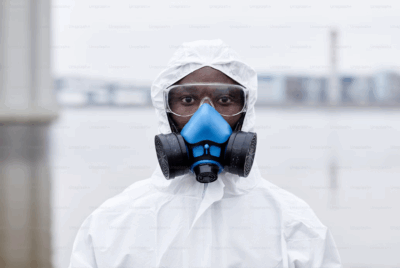Are Conspiracy Theories Overshadowing the Real Dangers of 5G? The advent of 5G technology has sparked…
Government Actions to Protect Against the Dangers of 5G

Government Actions to Protect Against the Dangers of 5G: Are They Enough?
As 5G technology rolls out globally, promising faster internet speeds and greater connectivity, a growing number of people are voicing concerns about its potential health risks. 5G operates using higher-frequency waves than its predecessors, which has prompted fears about the long-term exposure to electromagnetic radiation. Though governments across the world have implemented measures to protect citizens from these potential dangers, critics argue that these actions may not go far enough.
Understanding the Risks
The primary concern around 5G technology centers on the higher-frequency electromagnetic radiation it uses. Unlike 3G or 4G, which operate on frequencies below 6 GHz, 5G relies on millimeter waves, which fall between 30 GHz and 300 GHz. These waves are higher in frequency and shorter in wavelength, leading to increased concerns about their potential effects on human health.
Several studies suggest that exposure to electromagnetic fields (EMF) may have biological effects, including an increased risk of cancer, genetic damage, and cognitive dysfunction. Though the World Health Organization (WHO) classifies EMF exposure from mobile networks as “possibly carcinogenic,” definitive conclusions about 5G’s safety remain elusive. This uncertainty has led to a growing public debate about whether governments are doing enough to mitigate these potential risks.
Government Regulations and Guidelines
Governments worldwide have taken a variety of steps to ensure the safety of 5G technology, primarily through regulatory bodies like the Federal Communications Commission (FCC) in the United States, the International Commission on Non-Ionizing Radiation Protection (ICNIRP), and national telecom regulators. These organizations set exposure limits on electromagnetic fields based on current scientific research. However, many critics believe these limits are based on outdated studies that do not account for the increased exposure that 5G technology introduces.
For example, the FCC’s current EMF exposure guidelines were established in the late 1990s. Though these limits are intended to prevent thermal damage, which is the heating effect caused by EMF, they do not address potential non-thermal biological effects such as oxidative stress or DNA damage. The exponential increase in the number of cell towers and small-cell antennas required for 5G networks further exacerbates concerns, as citizens are now exposed to stronger and more frequent radiation sources than ever before.
Lack of Transparency and Independent Research
A key critique of government actions to protect against 5G dangers is the lack of transparency in the research process. In many cases, the studies used to justify safety guidelines are funded or influenced by the telecom industry itself, raising questions about potential conflicts of interest. Independent studies that suggest potential dangers often receive less attention or are dismissed as alarmist, leaving the public feeling uncertain about the true risks.
In the United States, for instance, the National Toxicology Program (NTP) conducted a comprehensive, multi-year study that found “clear evidence” that long-term exposure to radiofrequency radiation can cause cancer in lab animals. Despite these findings, the FCC and other regulatory bodies have not revised their safety standards to account for this new evidence. This has led to growing criticism that the government is prioritizing industry interests over public health.
The Role of Local Governments
While national governments and international organizations have largely supported the rapid deployment of 5G networks, some local governments have pushed back against the technology. Several cities and municipalities, particularly in Europe, have enacted moratoriums on the installation of 5G infrastructure until more research can be conducted on its potential health impacts.
For example, cities in Switzerland, France, and Belgium have implemented partial or full bans on 5G rollout, citing the precautionary principle. This principle holds that if a technology poses a potential risk to human health, it should not be widely deployed until its safety is conclusively proven. However, local governments often face pressure from telecom companies and national authorities to lift these bans, as 5G is seen as essential for economic growth and technological advancement.
What More Can Be Done?
Critics argue that governments should take more proactive measures to address the potential risks of 5G. One such measure is revising existing safety standards to account for non-thermal biological effects, which many researchers believe pose a greater risk than the current guidelines suggest. Additionally, governments could fund more independent studies to provide a clearer understanding of 5G’s health impacts. This would help to reduce the current reliance on industry-funded research, which is often perceived as biased.
Another potential action is greater public transparency. Governments could make more data and research available to the public, allowing citizens to make informed decisions about their exposure to EMF radiation. The creation of public awareness campaigns that educate people about safe technology usage, including steps like reducing direct contact with mobile devices, limiting children’s exposure, and minimizing 5G device usage in sensitive areas such as schools and hospitals, could also help alleviate public fears.
Government Actions to Protect Against the Dangers of 5G: Are They Enough
While governments have taken steps to ensure that 5G technology is rolled out safely, the current measures may not go far enough to protect the public from potential dangers. The lack of updated safety standards, the reliance on industry-funded research, and the rapid expansion of 5G infrastructure without sufficient transparency have led many to question whether the government is doing enough. As 5G technology continues to expand, it is essential for governments to prioritize independent research, update safety guidelines, and maintain transparency with the public to ensure that health and safety remain at the forefront of this technological revolution.



